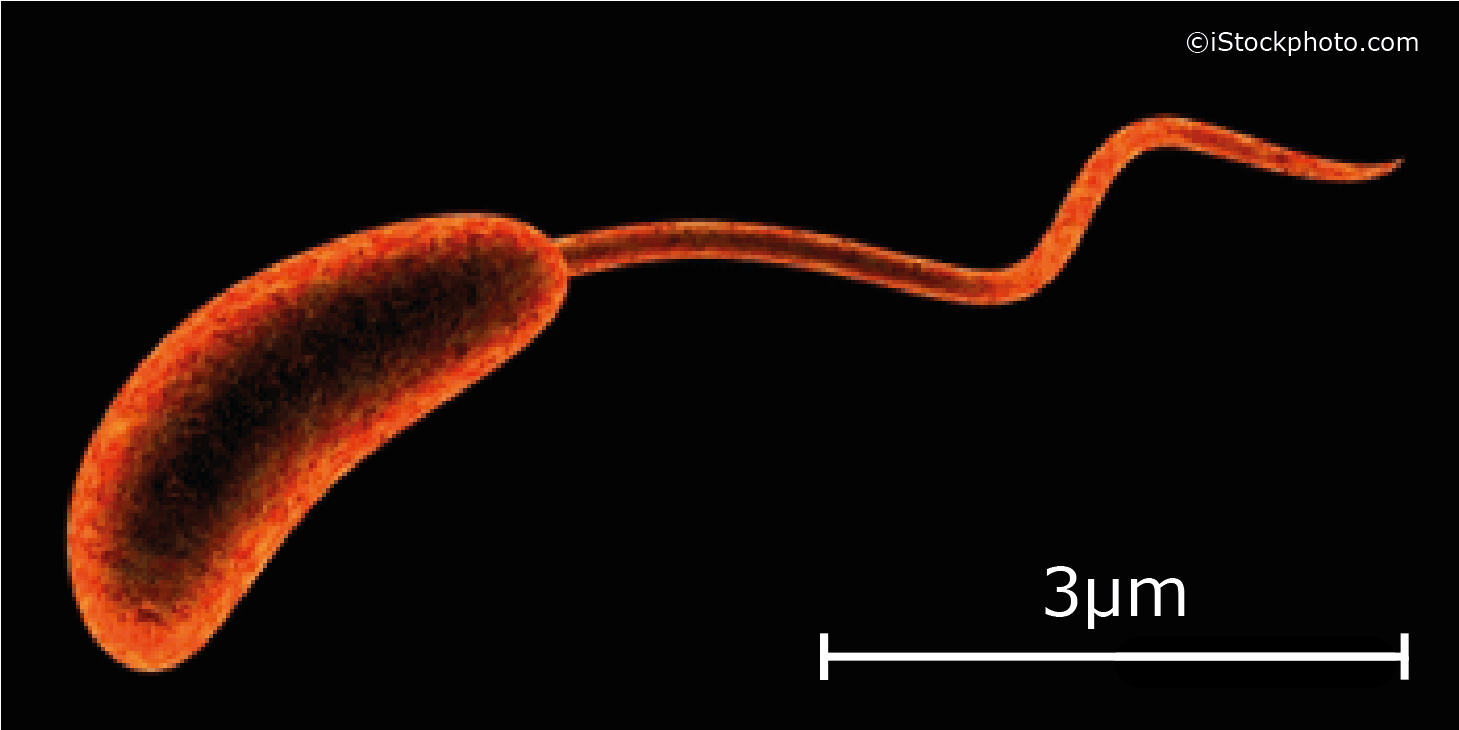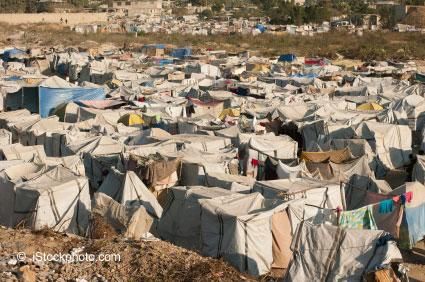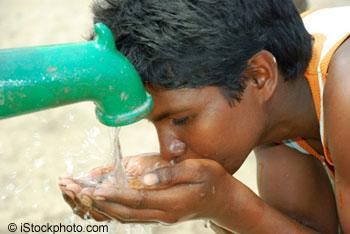This topic takes on average 55 minutes to read.
There are a number of interactive features in this resource:
 Biology
Biology
Cholera is a bacterial infection that affects the intestinal tract. It is caused by bacteria called Vibrio cholerae. Cholera is spreading rapidly and extensively, at epidemic levels, in parts of Central and South America. People who may be at risk include those travelling to foreign countries where outbreaks are occurring, and people who consume raw or undercooked seafood from warm coastal waters subject to sewage contamination. In both instances, the risk is usually small.
Cholera bacteria are spread by eating or drinking food or water contaminated by the faecal waste of an infected person. This occurs more often in less developed countries which don’t have adequate clean water supplies and proper sewage disposal. It is a particular problem after disasters, when many thousands of people are crowded together with little or no sanitation. Even in these situations the bacteria are not usually transmitted directly from one person to another – it is through drinking contaminated water.

Cholera bacteria can cause serious disease, but they can now be destroyed using antibiotics.

Refugee camp
Many people who pick up the cholera bacterium don’t become ill and never know they have been infected – but they still pass bacteria out in their faeces which can infect other people. Others have mild to severe diarrhoea, vomiting and dehydration, but generally no fever. The symptoms may appear from a few hours to five days after exposure. This type of infection is very difficult to distinguish from simple gastroenteritis However the cholera bacteria are shed in huge numbers in the faeces and can infect others.
About 1 person in every 10 who gets infected will suffer from full blown cholera. People produce so much pale, watery diarrhoea that they can die from dehydration within hours. People can also vomit almost continuously. They suffer from severe muscle cramps from the loss of salts, dehydration and shock as their blood pressure plummets.
Conditions like these, where thousands of people lose their homes in a natural disaster or a war, are where cholera can do the most damage. Lack of sanitation, and only dirty water to drink, mean cholera can kill as many people or more than the original disaster unless rehydration fluids and antibiotics are made available.
The biggest problem with cholera is the severe dehydration which results from the diarrhoea. So the first priority is to replace the fluids and salts which have been lost. This can be done by mouth, encouraging patients to drink rehydration fluids. Often an intravenous drip putting the liquid straight back into the blood is needed. Antibiotics are also used to treat the disease. They can reduce the time the patient suffers from diarrhoea, and stop any more bacteria being shed in the faeces which helps stop the disease from spreading.
There is a cholera vaccine but it only gives partial protection (50%) which only lasts from 2-6 months. Some doctors recommend having the cholera vaccine if you are travelling to an infected country, others feel it isn’t worth it.
The single most important preventative measure is to make sure that world-wide everyone has a supply of clean, uncontaminated water and that sewage is disposed of effectively. Once people do not depend on drinking water which can easily be contaminated with sewage, the spread of cholera can be stopped almost completely.
For travellers, the simplest way to avoid cholera is to avoid consuming uncooked foods or water in foreign countries where cholera occurs, unless they are known to be safe or have been properly treated.

A supply of clean water is a major factor in preventing spread of cholera.